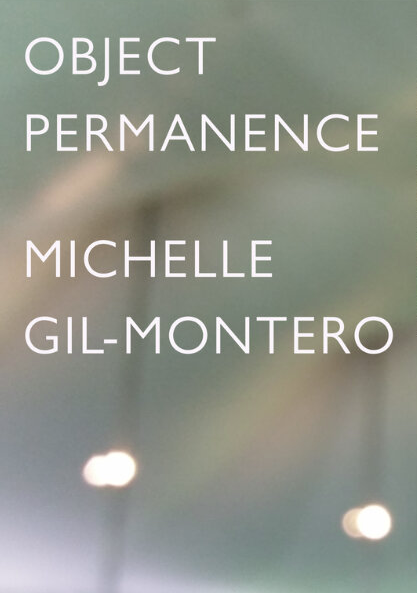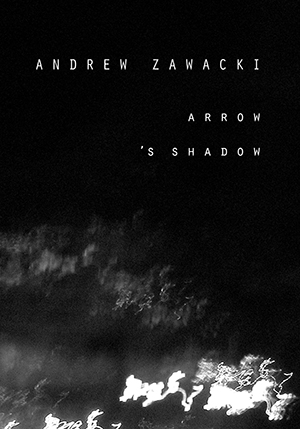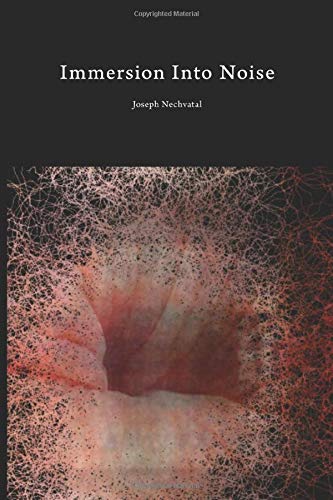“Ecolyric is elegiac, choral, polyvocal, interrupt-ed/-ive, allusive, collaged, curated, composted, translative. It is document, artifact, dirge, trace.”
–Angela Hume
I.
I’m drawn to Angela Hume’s description of the ecolyric in Counter-Desecration: A Glossary for Writing Within the Anthropocene because of its insistence on noise as a necessary component rather than an element to be isolated and cancelled out. Hume quotes Brenda Hillman’s observation that amidst environmental catastrophe, “lyric is rendered on torn, damaged, or twisted strings.” As I suggested in my post on fidelity, “noise” is deployed as an aesthetic judgment, simultaneously signaling excess and lack. It is also definitionally anthropocentric. Aaron Zwintscher notes in Noise Thinks the Anthropocene: An Experiment in Noise Poetics, “Legally, noise, like obscenity, is determined based on the speculation of the potential impact on an idealized ‘average, reasonable person.’ To allow noise to be defined solely through its applications in ordinary language, to allow it to be articulated only by force of law, is to reduce noise to merely the articulation of power and domination.” However, the ecolyric rejects the idea of a coherent human subject and regards noise not as a bug, but a feature.

Hume’s definition points toward two available trajectories (among many) that might subvert the anthropocentrism of the lyric. As a “trace,” with its “interrupt-ed/-ive” and “collaged” aspects, the ecolyric can tend toward silences, voids, and lacunae. Object Permanence (Ornithopter Press, 2020), poet and translator Michelle Gil-Montero’s first full-length poetry collection, is interested in exploring this territory. On the other hand, as “choral,” “polyvocal,” and “composted,” the ecolyric can multiply signals into noise and excess. Andrew Zawacki’s chapbook Arrow’s Shadow (Equipage, 2017) takes this second tack.
II.
Object Permanence opens with an epigraph from the great poet of silence, Alejandra Pizarnik: “Whatever you see, whatever can be taken away, is unspeakable.” Gil-Montero enacts this notion of unspeakability in “Creation Story,” the book’s only prose poem. An unobtrusive date-stamp provides the only indication of the poem’s subject, the 2018 mass shooting at the Tree of Life Synagogue in Pittsburgh. The unspeakable horror of this event is rendered through the language of distance, shadow, and absence. Finally, the horror takes a semi-solid form as a “mist” that “fills Pittsburgh.” As “mist” cycles repeatedly through the last lines of the poem, its homophonic overtone creeps in. We start hearing “missed,” which becomes explicit at the end of the poem: “Mist is the presence of absence. (Miss them, miss us.) This ceaseless mist.”
In “First Forty Days,” a long sequence whose title alludes to the Biblical practice of quarantine after childbirth, Gil-Montero uses nonhuman voices and weirdly full voids to chip away at the false border between the human subject and the surrounding world. Wasps act as uncanny agents in the poem, able to perform human-like functions as a collective swarm:
Then rhythm
is my wandering womb,worldly
hum that no one
can explain.August,
the nestchews down
to a center room,
the hole in the middle.
Interestingly, the wasps’ “worldly hum” create a kind of sympathetic vibration in the speaker, further breaking down the borders of the human subject. “Did I know // I was becoming / other?” the speaker asks. In fact, the swarm of wasps mirrors the bodily alienation of childbirth:
In quarantine,
a humming
miasma of wasps rises
from the earth, and is beautiful,
like birth.
“First Forty Days” also returns to the theme of silence, this time by elevating nonhuman voices to the level of the human. These voices speak in the language of climate change and drown out the speaker’s human voice:
There are sounds
I can’t explain
The loneliness of calving ice
All night
I’ll talk darkly to the trickle
That talks over me.
By equating the voice to a “trickle,” Gil-Montero signals the materiality of the voice, a key motif in Object Permanence. In the poem “Sequence,” we find another instance, this time highlighting the gender politics of the voice with its Rapunzel-like figure “[m]ezzanined / by parentheses // her voice / trains its fingernails to curl // over the balcony.” Later, in the aphoristic “Seasons,” Gil-Montero describes how “voices age / husked, othered / equally by nudity / and cover.” This constant othering of the human voice throughout Object Permanence seems consistent with the aims of the ecolyric since, as Lisa Robertson notes in “Disquiet,” the “prosody of noise parses a discomfort that uncovers, in its unstable caesura, the fact of the citizen’s material fragility.”
In light of the collection’s themes of silence and the unspeakable and its particular sensitivity to how gender operates on language, I am reminded of a different line from Pizarnik’s poem “Cornerstone”: “I cannot speak with my voice, but I speak with my voices” (Yvette Siegert’s translation). In her essay “The Disappearers,” Cynthia Cruz writes, “[h]ow much conforming, I wonder, can an artist do before her language and her work are no longer her own? What happens when she loses her own vernacular? In the end, the choice seems to be learn to speak in the majority language and, in this act, lose one’s self, or refuse, speaking in silence, in iterations of silence.” Compare this to “Sequence,” in which Gil-Montero tells us, “[t]he best defense is stillness.”
Gil-Montero is also a prolific and accomplished translator, and the semantic multiplicity and productive noise involved in translation spill over into Object Permanence. Cole Swensen observes in her essay on translation “In Praise of Error” that “[a]lterations that occur to a message within the transmission and reception systems are called ‘noise’ […] and noise always makes the system more complex, which means that its potential for meaning has increased.” In Object Permanence, this comes through most clearly in “Attached Houses” (whose title asks us to think about how “stanza” literally means “room”). In this poem, Gil-Montero bends her lines into syllabics, which result in defamiliarizing line breaks. For instance, ordinary plant names fracture into an ominous domesticity:
the window over-
looks—tare
in the rag-
weed, broom-
rape, catch-
fly, creeping fox-tail—all
meticulous
twigs chewed to
sugar
“Attached Houses” is full of these compellingly glitchy moments that disrupt the expected forward progress of the lyric poem and emphasize the “interrupt-ed/-ive” quality of the ecolyric. But Gil-Montero is equally interested in the silences that surround these noisy interludes. In the long sequence “Lacunae,” human signals are continually swallowed by their nonhuman surroundings, consistent with Zwintscher’s observation that “[n]oise, due to its indeterminate and undecidable nature, its openness and its oppositional character, forms a necessary, but not sufficient, condition for understanding and coexisting with the other, the unfamiliar, the unknown.” In this poem, we listen as “highway’s / embattled / quiet // hums / to brim // with the insufficiencies of words.” “Lacunae” registers “the music of / words losing use” as “power / lines digress into moss” and “the hills fade blue / and false.” We are told that even poetic structures are suspect: “no / repetition is // never emphasis.” “Lacunae” ends in a moment that feels essentially ecolyrical in its willingness to decenter and displace the human voice:
[…] we talk
as a dream
confesses itself, all at once
then slowlyinto the ether
of the other andout the
mouth, proud of itsspeech
By the end of the collection, the title of Object Permanence feels increasingly fraught. On one hand, it points to the intimate excitement of parenthood, as the child begins to feel the speaker’s fascination with the details of the surrounding world. At the same time, the collection’s patches of static, “insufficiencies / of words,” and lacunae reveal permanence as an anthropocentric construct, measured on a human timescale. Object Permanence is comfortable lingering in the ecolyric’s discomfort, however, enacting Lisa Robertson’s claim that in response to noise, “[o]ne becomes a subject in the barest sense: a contingent point of coordinated perception of and response to temporal specificity.” Or to put it in Gil-Montero’s terms, “To loosen my unknowing borders […] I define my reaches generously.”
III.

In contrast to Object Permanence’s interest in silence and blank intervals, Andrew Zawacki’s chapbook Arrow’s Shadow revels in the semiotic excess of “para- / noise,” as if Walter Benjamin’s grove of translation were plugged into a Marshall stack and a delay pedal. Arrow’s Shadow originally appeared as a section of Zawacki’s 2009 collection Petals of Zero Petals of One, but was re-released as a standalone chapbook in 2017 by the Cambridge-based Equipage Press. The book is divided into sections by sets of barcode-like lines rather than individually titled poems. Through its pressurized line breaks, neologisms, and synthetic bilingual diction, Arrow’s Shadow reflects the ecolyric’s noisier aspects—the “choral,” “polyvocal,” “composted,” and “translative.” Or as Zawacki puts it, “the sound check, verb and reverb, the voiceover / -lap.”
Zawacki’s poems feel multimodal because of the way their right-aligned, “interrupt-ed/-ive” line breaks create visual noise on the page, an “inter- / rupted inter- / rupting shortwave intimacy.” This often results in a doubling effect, a kind of echo that splits recognizable words into recombinant particles:
……………………………………..tin-
……………………………………..tin-
……………………………………..nabulation……………………………………..the tympanum a fan belt
……………………………………..whirring around the gear box and banging
……………………………………..a broken cymbal in the grief, the gravity sessions……………………………………..a 2-stroke engine idyll cough and car-
……………………………………..buretor pentameter……………………………………..the cylinders poppet a dead-
……………………………………..pan
……………………………………..a tin-
……………………………………..pan
……………………………………..pan
……………………………………..-egyric
Recalling Gil-Montero’s line that “repetition is // never emphasis,” Zawacki seems interested in letting language accrue in the misty zone between meaning and material. In “Disquiet,” Lisa Robertson writes, “[n]oise is pollutant, a sign of the wasteful expenditure of unused energy. Noise is inefficient. Like garbage, it has no meaning at the same time that it signifies an excess of signification; meaning become so dense and continuous that it transforms into field, having previously functioned as figure.” Throughout Arrow’s Shadow, we find this confusion of field and figure—words dissolve into morphemes, making a kind of asemic click track while simultaneously allowing these loose elements to condense back into new permutations. This creates a kind of multidirectional reading—the eye skips, is dragged back to the top of the poem to start again. Even in unbroken lines, we still find little shudders of noise, like the homophonic play of “broken cymbal” or “idyll cough.”
Arrow’s Shadow also crackles by activating neologisms and a French-English hybrid diction. Like the repetition across line breaks, Zawacki’s neologisms operate through fusion, reminiscent of Aase Berg’s nuclear kennings. We find “gauntwater and brittlewhite,” “modemsong,” and “lowghosts.” We also encounter Cole Swensen’s constructive “error” of translation (as in “errer,” “to wander”) when Zawacki’s French words short-circuit their surrounding English. A particularly electric frisson happens with the couplet “minor limit elegy / major limit éloge,” where the harmonious sound of the false cognate rubs up against the slight dissonance in meaning (“elegy” versus “praise”). Aaron Zwintscher observes that “noise is not a consonance of opposites, but rather a troubled unity, a unity that does not synthesize without remainder. A unity that is not without its own noise.” These glitchy, translative moments in Arrow’s Shadow do just that.

Through its excessive layering, repetition, and reverb, Zawacki’s chapbook rejects the oversimplified notion of fidelity as simple noise-reduction, aiming instead for “fidelity to a language / faithful to itself” that recognizes that “language is silence’s stop / -gap.” Noise is a political category and a negative aesthetic judgment, but the ecolyric refuses the anthropocentrism that undergirds the category of noise. Joseph Nechvatal writes in Immersion Into Noise, “perhaps an art of noise can also be postulated as a realm of antisocial cultural purpose directed toward the revolutionary transformation of an irrational social reality that insists on calling itself rational.” Zwintscher explicitly adapts this revolutionary possibility to an ecological context: “noise is not merely nuisance or annoyance but that it retains the potential to be articulated as a political strategy to reimagine our being-in-the-world and an increasingly necessary (in the face of ecological crisis) coexistence with human and nonhuman others.” In poetry, the ecolyric holds open this possibility.
In other words, what we need is, in Zawacki’s terms, “a fuckload of beautiful noise.”
Zack Anderson holds an MFA from the University of Notre Dame. His book reviews appear in American Microreviews & Interviews, Harvard Review, and Kenyon Review. His poems have recently been published in Fairy Tale Review, The Equalizer, White Stag, and others. He currently lives in Athens, Georgia where he is a PhD student at the University of Georgia. @ZackAanderson